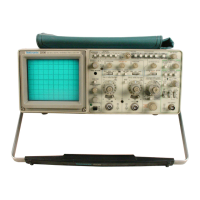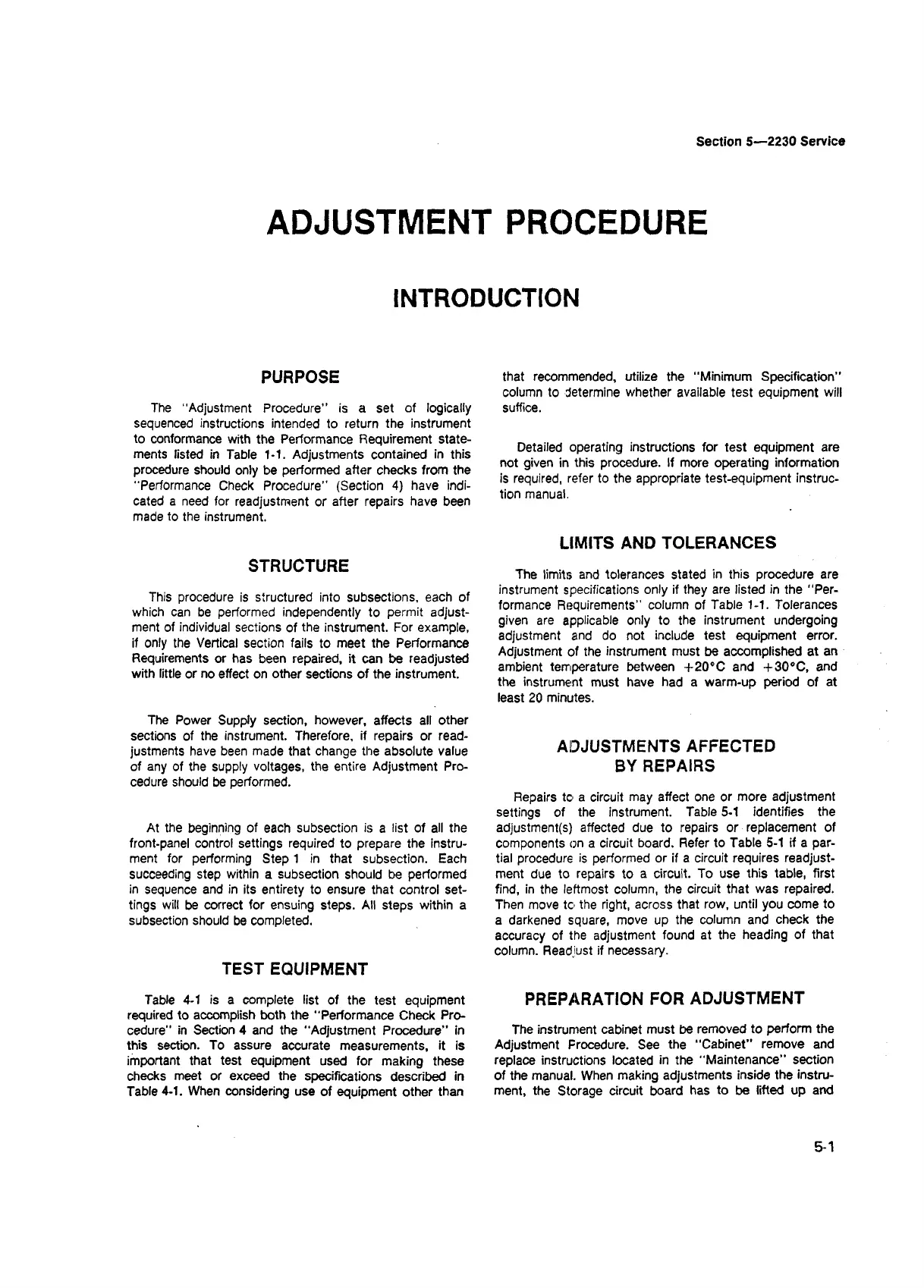Section 5— 2230 Service
ADJUSTMENT PROCEDURE
INTRODUCTION
PURPOSE
The "Adjustment Procedure" is a set of logically
sequenced instructions intended to return the instrument
to conformance with the Performance Requirement state
ments listed in Table 1-1. Adjustments contained in this
procedure should only be performed after checks from the
"Performance Check Procedure” (Section 4) have indi
cated a need for readjustment or after repairs have been
made to the instrument.
STRUCTURE
This procedure is structured into subsections, each of
which can be performed independently to permit adjust
ment of individual sections of the instrument. For example,
if only the Vertical section fails to meet the Performance
Requirements or has been repaired, it can be readjusted
with little or no effect on other sections of the instrument.
The Power Supply section, however, affects all other
sections of the instrument. Therefore, if repairs or read
justments have been made that change the absolute value
of any of the supply voltages, the entire Adjustment Pro
cedure should be performed.
At the beginning of each subsection is a list of all the
front-panel control settings required to prepare the instru
ment for performing Step 1 in that subsection. Each
succeeding step within a subsection should be performed
in sequence and in its entirety to ensure that control set
tings will be correct for ensuing steps. All steps within a
subsection should be completed.
TEST EQUIPMENT
Table 4-1 is a complete list of the test equipment
required to accomplish both the "Performance Check Pro
cedure" in Section 4 and the "Adjustment Procedure” in
this section. To assure accurate measurements, it is
important that test equipment used for making these
checks meet or exceed the specifications described in
Table 4-1. When considering use of equipment other than
that recommended, utilize the "Minimum Specification”
column to determine whether available test equipment will
suffice.
Detailed operating instructions for test equipment are
not given in this procedure. If more operating information
is required, refer to the appropriate test-equipment instruc
tion manual.
LIMITS AND TOLERANCES
The limits and tolerances stated in this procedure are
instrument specifications only if they are listed in the "Per
formance Requirements" column of Table 1-1. Tolerances
given are applicable only to the instrument undergoing
adjustment and do not include test equipment error.
Adjustment of the instrument must be accomplished at an
ambient temperature between +20'C and +30°C, and
the instrument must have had a warm-up period of at
least 20 minutes.
ADJUSTMENTS AFFECTED
BY REPAIRS
Repairs to a circuit may affect one or more adjustment
settings of the instrument. Table 5-1 identifies the
adjustment(s) affected due to repairs or replacement of
components on a circuit board. Refer to Table 5-1 if a par
tial procedure is performed or if a circuit requires readjust
ment due to repairs to a circuit. To use this table, first
find, in the leftmost column, the circuit that was repaired.
Then move to the right, across that row, until you come to
a darkened square, move up the column and check the
accuracy of the adjustment found at the heading of that
column. Readjust if necessary.
PREPARATION FOR ADJUSTMENT
The instrument cabinet must be removed to perform the
Adjustment Procedure. See the "Cabinet” remove and
replace instructions located in the "Maintenance” section
of the manual. When making adjustments inside the instru
ment, the Storage circuit board has to be lifted up and
5-1

